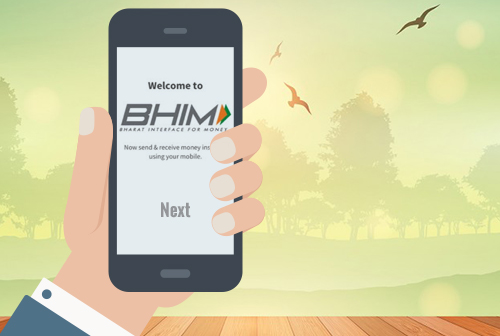Paisabazaar app Today!
Get instant access to loans, credit cards, and financial tools — all in one place
Our Advisors are available 7 days a week, 9:30 am - 6:30 pm to assist you with the best offers or help resolve any queries.
 Get the App
Get the App

Get instant access to loans, credit cards, and financial tools — all in one place

Scan to download on


The Union Budget 2017 gave a major boost to the Aadhaar Card identification programme and the BHIM digital payments application. In his budget speech to the Parliament, Finance Minister Arun Jaitley said that Aadhaar-based smartcards for senior citizens and an Aadhaar enabled payment system will be launched soon. He also stated that the government plans to launch two more schemes for use of the BHIM app.
The Aadhaar Initiatives
The government will soon launch Aadhaar-based smart cards for senior citizens. Though details were not disclosed, the card is likely to contain health and other data of senior citizens. The pilot service will first be tested in 15 cities across India in 2017.
This initiative is in addition to the government’s plans to launch an Aadhaar-based payment service, for which 14 banks have already signed up. Aadhaar Pay will be the merchant-version of an Aadhaar-enabled payment system and will allow users to pay for their purchases at the Point-of-Sale (POS) without any physical card.
Aadhaar Pay will be especially helpful for people who do not have debit cards, digital wallets or mobile phones. This service will work in tandem with other payment options such as debit cards, Immediate Payment Service (IMPS), Unified Payment Interface (UPI) and Unstructured Supplementary Service Data (USSD).
Boost to BHIM
The minister also announced that the BHIM digital payments app will have two additional schemes, one of which will be a referral bonus scheme and the other a cashback scheme. This is expected to boost the use of the app, which has already seen 10+ million downloads from Google Playstore ever since its launch at the end of last year.
Linking of Aadhaar and BHIM
In addition to the initiatives announced in the Budget, Aadhaar and BHIM will now be linked to enable easier financial transactions.
The Emergence of Aadhaar
Aadhaar is slowly and steadily becoming the backbone for the government to pay subsidies, pensions, wages to NREGA card holders and any other type of government-linked payments. As such, it makes sense for the administration to combine this unique number with a specific digital payment gateway and make digital payments near seamless for Indians.
How BHIM Works
BHIM is based on the Unified Payment Interface (UPI) of the National Payments Corporation of India (NPCI). The app is linked with the users’ bank account, and directly credits or debits the account at the end of the payment transaction process. If the account is UPI activated, you can just simply ask the users or payees for their virtual payment address and then make the payment to that account.
In the coming weeks, the government will unveil a feature in BHIM wherein by just entering the 12-digit (Aadhaar) unique identification number, the user will be able to make payments. The Aadhaar number will allow an user to sign-up for the app without any requirement of documentation or biometrics. After the linking takes effect, users will be able to make payments using any three options: with their Aadhaar number, with their mobile or a virtual payment address, or with their bank account number and IFSC Code.
Linkage of BHIM with Aadhaar card will make the transaction and payment methods more streamlined since almost one-third of India already has their Aadhaar numbers linked to their bank accounts. BHIM is also expected to help the government reduce its cost of making financial payments.